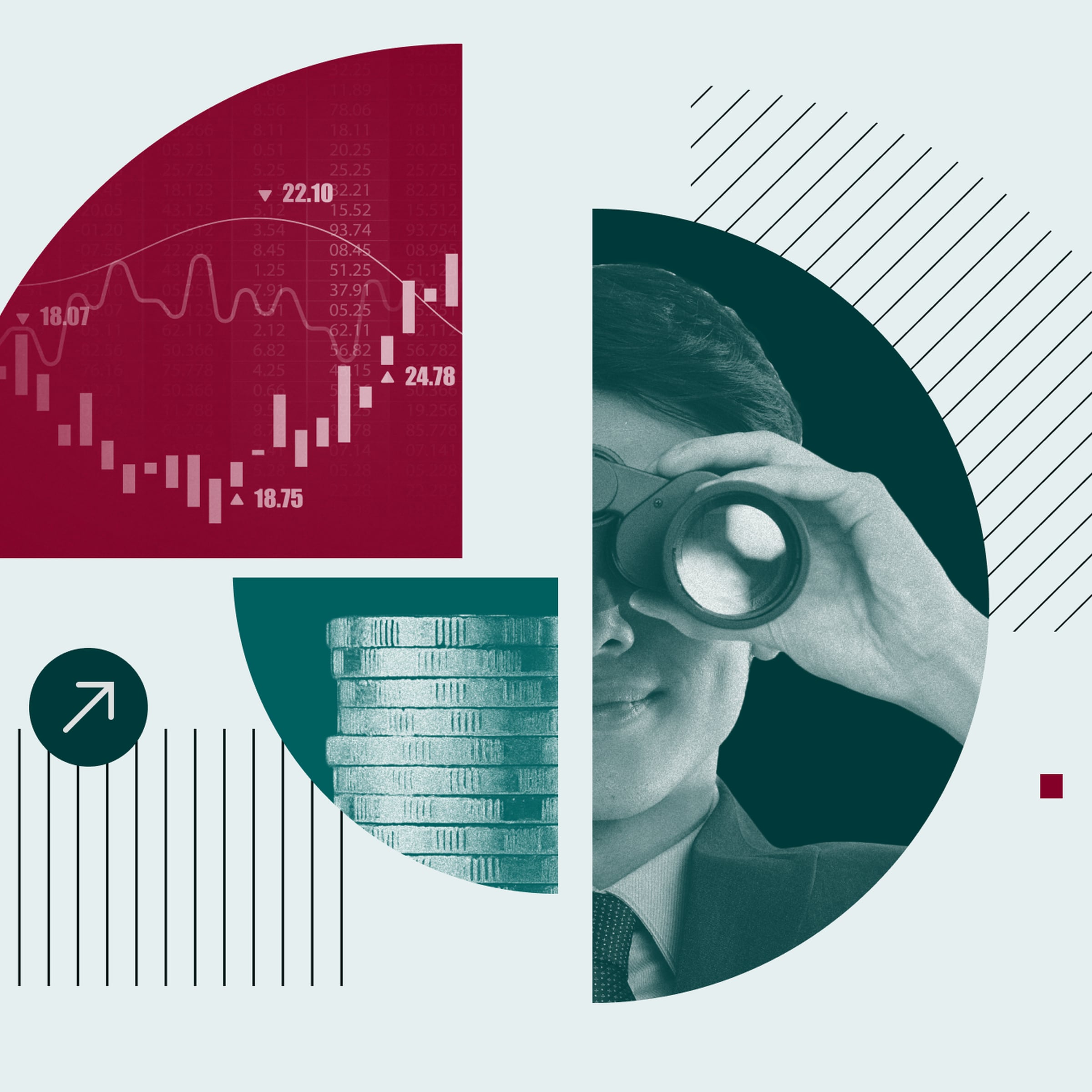How to Invest in Volatile Stock Markets
This approach to investing reduces the urge to buy or sell when equities get a little too exciting.

Things have been stormy in equity markets over the past few weeks. While the year started on a high note, the market volatility over the past week has seen investor confidence waver, as fears mount over the trajectory of interest rates.
Moreover, the ongoing volatility may persist as investors remain torn between wishing for an economic rebound (supporting corporate earnings growth) and wanting central banks to begin unwinding high interest rates.
Few would dispute that the best time to invest is when prices have fallen, and quality names are trading at a meaningful discount to their fair value. The recent sell-off created attractive buying opportunities for opportunistic long-term investors.
Given that timing the market bottom or peak is impossible, many investors either panic sell or buy at the wrong time or remain on the sidelines during volatile markets. One way to make the most of price volatility is dollar cost averaging.
What is Dollar Cost Averaging?
It’s an investment approach that involves consistently investing a set amount of money at regular intervals (monthly or quarterly) over a long term, instead of splurging larger sums once or twice a year. By doing so, investors can mitigate the impact of volatility risk by spreading it out over time, regardless of market fluctuations.
By investing a little bit at a time instead of a lump sum, you may pay less on average for each stock, mutual fund, or ETF. Further, DCA helps lower the risk of making impulsive and ill-timed investment decisions, thus taking emotion out of the investment process, and helping you stick to your investment plan.
DCA promotes a long-term perspective, encouraging investors to focus on the big picture rather than short-term volatility. While market swings may trigger panic selling or irrational buying, DCA fosters a disciplined approach, underscoring the importance of consistency and patience in achieving long-term investment objectives.
Importantly, dollar cost averaging is not limited to stock investments. It can be applied across asset classes, including mutual funds, exchange-traded funds (ETFs), and even cryptocurrencies.
Regardless of the asset type, the underlying principle remains the same: regular, disciplined investing over time.
How Dollar Cost Averaging Works
The stock market's price swings can vary greatly from the annual return. Your annualized performance might differ from the index based on when and how you invested.
Consider this hypothetical scenario: you decide to invest $1000 in the stock market at the beginning of the year. You put all your money at once and buy 50 shares of Air Canada trading at $20 apiece. At the end of the year, you will only have 50 stocks of AC. However, if you employed DCA you would invest $100 and buy 5 stocks in January. Now suppose there’s a market downturn in February and the stock price drops to $15. The same $100 will now enable you to acquire more than 5 AC stocks in February. By consistently purchasing shares at varying prices, spreading your investment dollars over the course of the year, you can benefit from a lower average cost per share, positioning you favourably for potential future gains.
Inevitably, prices will fluctuate throughout the year, triggering emotional responses. However, adhering to dollar cost averaging, and a predetermined investment plan, will help resist the urge to act impulsively, out of fear or greed, during times of heightened emotions.
Time in the Market, Not Timing the Market
Warren Buffett once said that it's wise for investors to be fearful when others are greedy and to be greedy only when others are fearful. When markets are cratering and everyone is selling off out of fear, most average investors tend to be reluctant to invest more. In a downdraft, when uncertainty runs high, it is difficult to swim against the tide and investing more seems counterintuitive.
But when the markets bounced back, as they invariably do, investors often regret not capitalizing on the buying opportunity. Similarly, when stocks are rallying, some investors choose to stay in cash, waiting for the next pullback to open attractive buying opportunities.
That's why putting in the same amount of money at regular intervals can keep investors on track without second-guessing themselves or letting their feelings take over when the market trend shifts.
The DCA strategy makes it easier to stick to the plan and ensures investors don't sit on cash instead of investing and potentially miss out on the market rebound. After all, investing isn’t about timing the market. It’s about staying invested and spending more time in the market for better outcomes.
Consistency is Key
Whether the market is soaring to new heights or plunging to new lows, dollar cost averaging remains a reliable ally, helping you in navigating through rough patches and seizing buying opportunities when they do come up.
Stay focused on the investing journey rather than short-term market events. Keep contributing with discipline, stay the course, and trust in dollar cost averaging to navigate you through the market's ups and downs.
Vikram Barhat is a freelance writer. The opinions expressed here are the author’s. Morningstar values diversity of thought and publishes a broad range of viewpoints.




